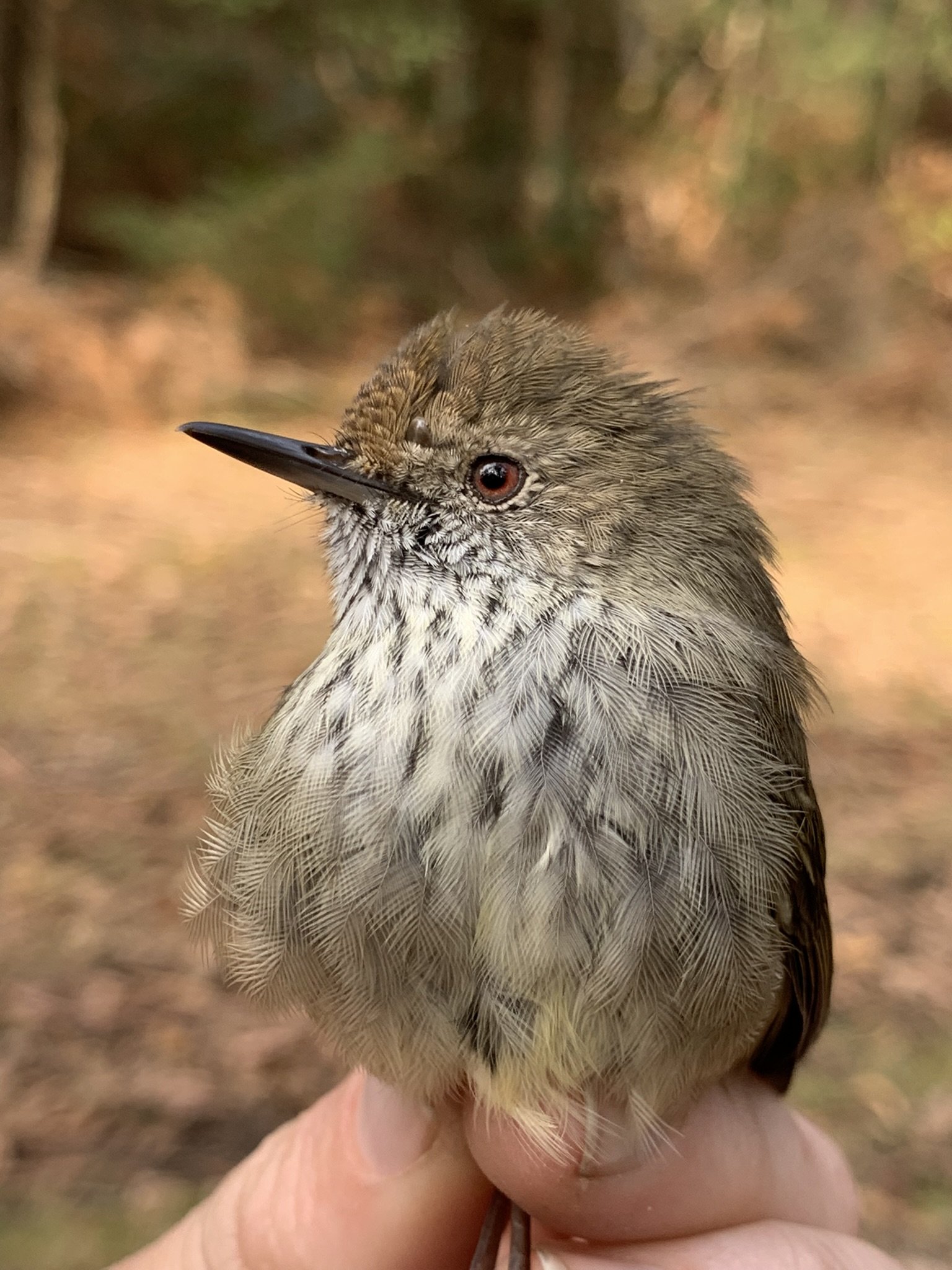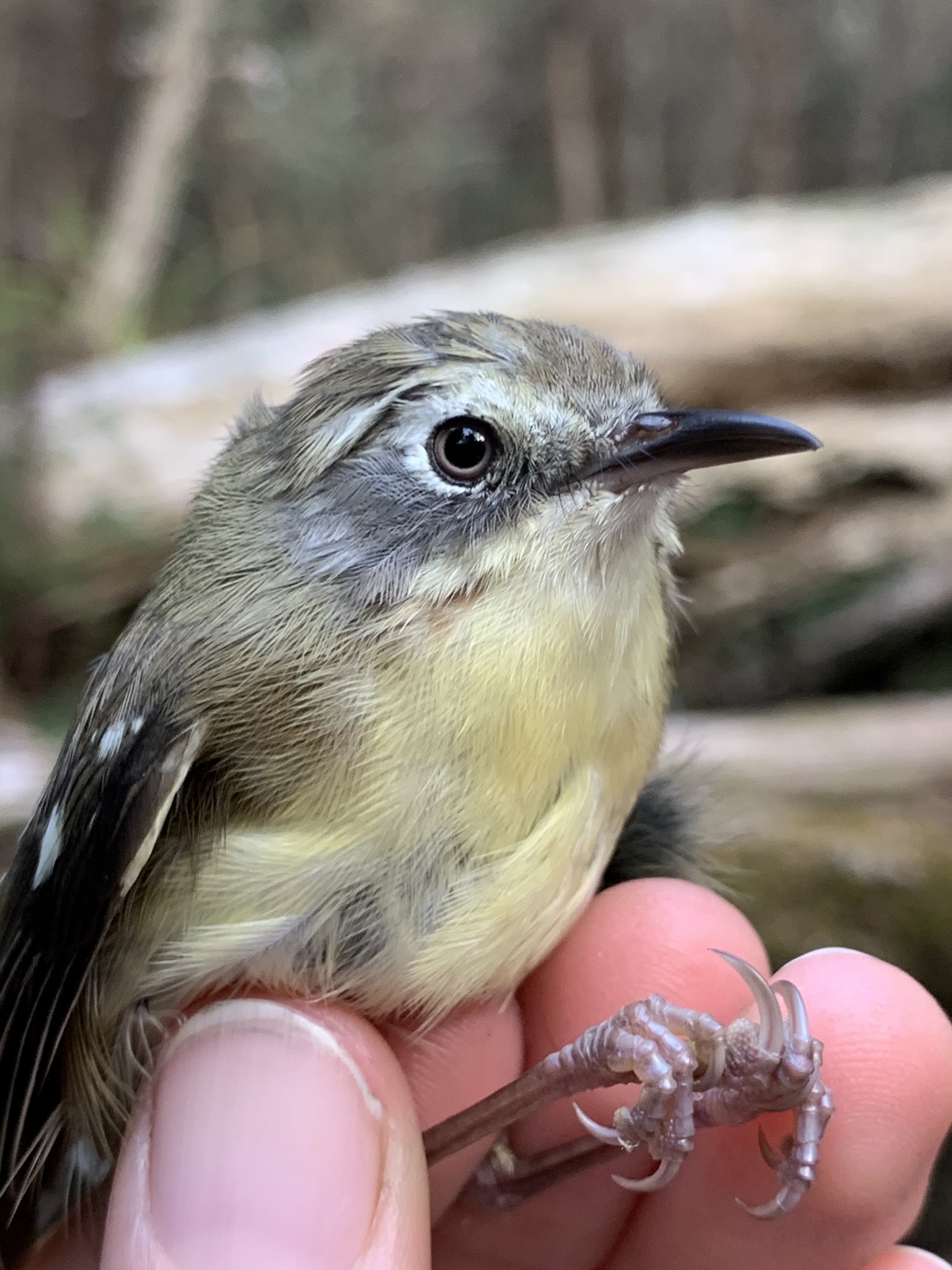The species
The King Island Scrubtit Acanthornis magna greeniana and King Island brown thornbill Acanthiza pusilla archibaldi are two small ‘forgotten’ brown birds. Both are island endemic subspecies of the mainland Tasmanian scrubtit and brown thornbill. The King Island scrubtit has been recognised as critically endangered for more than two decades and is listed accordingly under the federal Environment Protection and Biodiversity Conservation Act 1999 (EPBC Act). Despite the preparation of a recovery plan for the King Island scrubtit very little quantitative demographic information on the subspecies is available and almost no on-ground conservation action has been initiated.
With no confirmed sightings between 1971-2001 and fewer than 10 in the last decade, the King Island brown thornbill is listed as endangered under the EPBC Act and has no dedicated recovery plan.
Why it’s difficult
King Island has been severely deforested and extant native vegetation cover has been reduced to 33.5% of the island area, with most of the island now covered in non-forest vegetation for agriculture. The King Island scrubtit was historically widespread in swamp paperbark forests and dense gullies in wet forests, but are now confined to relict patches of swamp paperbark forest and are vulnerable to loss of this habitat. For example, in 2007, a wildfire in the Nook Swamps burned 90% of Swamp paperbark forest at this location, previously considered the stronghold of the species.
The King Island brown thornbill is understood to prefer Eucalypt woodland with a dense, shrubby understorey but could also co-occur with King Island scrubtit in paperbark swamp. So few contemporary sightings have been recorded that knowledge of the King Island brown thornbill’s specific habitat requirements is extremely poor.
What we are doing
We have undertaken the first systematic surveys on King Island for both of these critically endangered birds. Our surveys have provided the richest data on both the scrubtit and thornbill available in contemporary times, and our efforts represent the largest systematic survey of these species ever undertaken.
Photos: Tim Paasila





